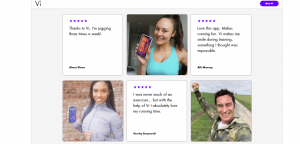As an online retailer, you know that it’s important to have an ecommerce store that’s easy to navigate, looks great, and has everything you might need to process a sale. But as any digital marketer will tell you, it won’t work to just sit back and wait for visitors to come to you. After all, out of a billion indexed web pages, more than 90 percent get no traffic from Google, and another five percent get fewer than 10 visits per month.
The question is, how do you increase traffic to your online store when you’re already busy running it?
Get all the tools you need to quickly find new customers and grow your retail store’s sales.
It’s all about striking a balance between paying for advertising that will get you traffic sooner and building the organic reach that gets you a steady influx of long-term visitors. To do that, you need a toolbox that includes social media, paid search ads, and website search engine optimization (SEO).
Social media: paid ads and free posting
In June of 2020, eMarketer reported that almost 30 percent of U.S. survey respondents had used social media to complete purchases. Facebook captured almost two-thirds of the social commerce market share, and Instagram followed not too far behind.
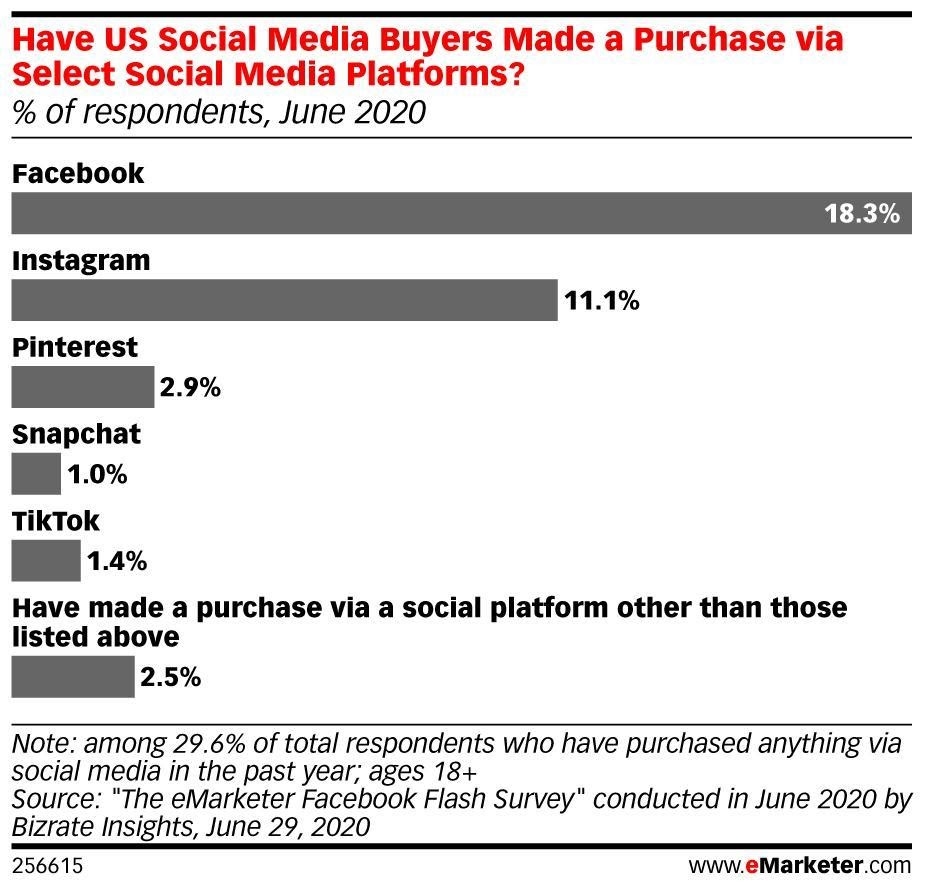
Looking to choose a social media platform? This chart shows Facebook and Instagram leading the pack.
Social media marketing doesn’t have to be overwhelming, and you don’t have to be everywhere. If you’re new to social media marketing, it’s best to start by focusing on one platform. Facebook and Instagram are both great choices for online retailers.
1. Facebook and Instagram ads
Facebook is the most-used social platform in the world, so it’s a good place to start if your goal is to get more traffic. Instagram is pretty close to the top, too, and it’s a great site for retailers because it’s a visually-based platform.
You can and should use organic posting — the kinds of posts you don’t pay for — as part of your social media strategy. Those posts are most likely to reach people who already follow you, though, so it’s important to include paid ads in the mix.
The best part of paid ads is that you can choose the audiences that will see your posts. You can target based on age, location, occupation, interests, and more. Start by figuring out what your target audience is and go from there.
If you use Constant Contact, it’s easy to create paid Facebook and Instagram ads straight from your dashboard. You can manage your ad campaigns alongside your social posts, too, which streamlines your social media strategy and frees up valuable time.
2. YouTube videos
Don’t forget about YouTube as you develop your social media marketing strategy. Among mobile users, it’s even more popular than Facebook, and it’s a great way for retail brands to connect with audiences.
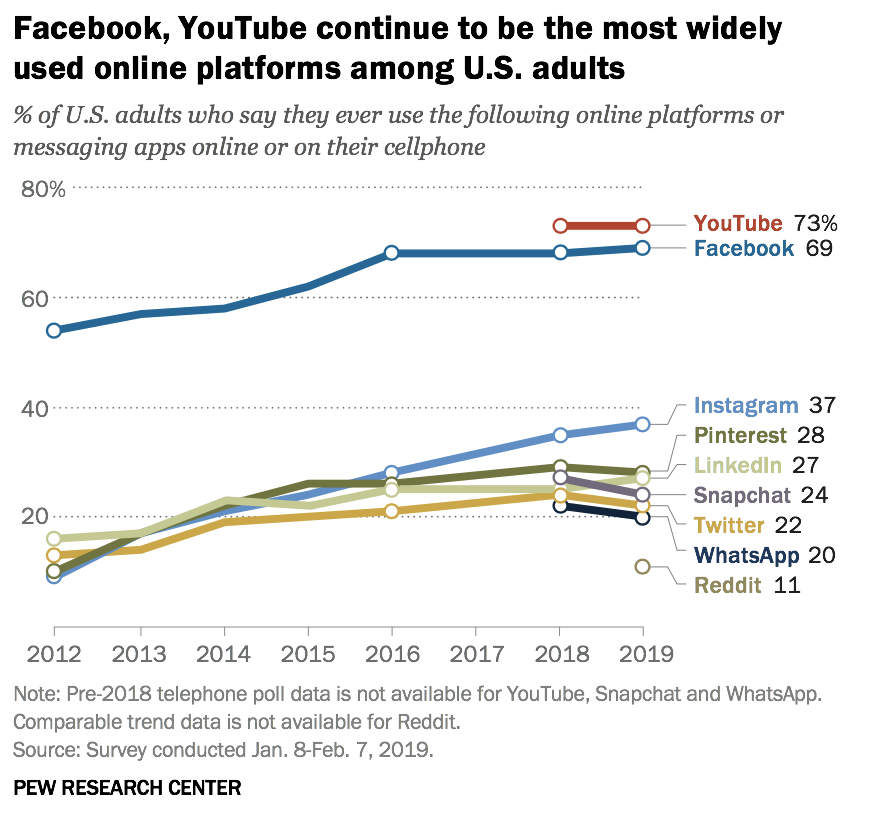
Check out how popular YouTube is with mobile users!
Consider these statistics:
- Three out of every four adults watch YouTube videos on their phones at home
- 68 percent of YouTube users watch videos as part of the purchase decision-making process
- YouTube reaches more viewers during prime hours than any cable TV network
The YouTube video landscape can be competitive, but that’s okay — all you have to do is make your videos as informative and valuable to audiences as possible, just like you would do with any other type of content.
Here are some video production ideas to get you started:
- Create a compilation of customer testimonials
- Announce the launch of new products
- Create a series of how-to videos (how to wear this new style, how to use this new kitchen gadget, etc.)
Be as thorough in your explainer videos as you can. Pack lots of use cases into your product introduction. Finally, don’t forget to write an engaging title that includes your target keyword — the search term or phrase that you think people would use to look for you. Be sure to link back to your website in your video descriptions.
Making your website work
Your website is your online retail store’s home base. Create at least four pages – Home, About, Products, and Contact — and include all of the information people might want about your business, from shipping and return policies to your brand’s story. That’s the first step toward making sure the search engines can find you.
3. Optimize for SEO
Search engine optimization, or SEO, is one of those digital marketing terms that can intimidate any online retailer. Don’t worry — all it means is designing your website so that search engines rank it highly on results pages.
- Make your pages readable — short paragraphs, plenty of white space, and helpful images that showcase your product and brand
- Include helpful, up-to-date content about relevant topics
- Make sure your site is mobile-responsive, so it’s easy for people to navigate and buy no matter what device they’re on
Don’t forget about mobile optimization. More people than ever are shopping on mobile devices, and the numbers are only going up. Business Insider Intelligence estimates that by 2024, 45% of all ecommerce sales will happen on mobile.
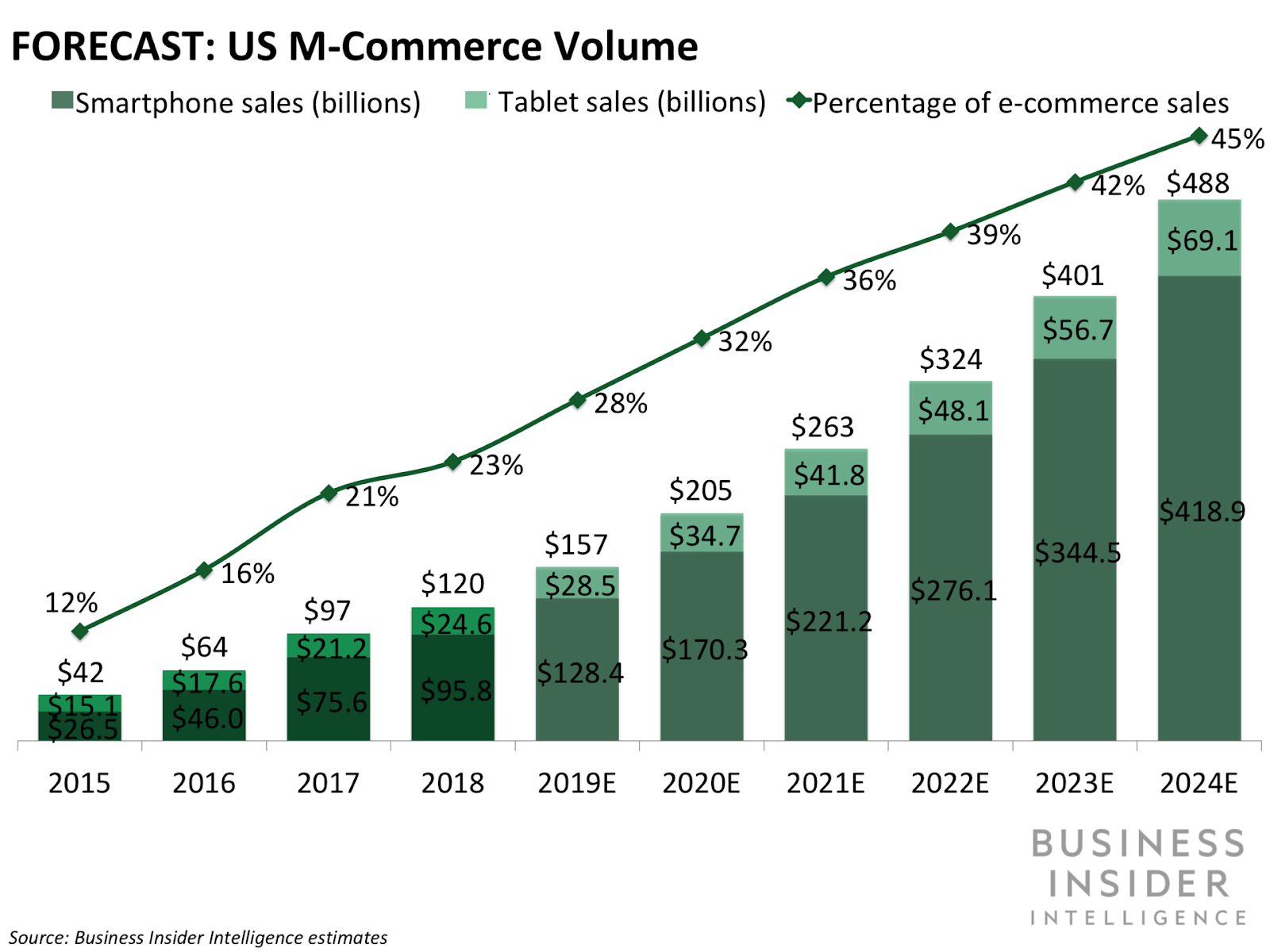
Mobile commerce is steadily growing, so you want to make sure it’s easy for your shoppers.
If you build your website through Constant Contact, you’re all set — your site will optimize for mobile automatically.
Using search ads
When people search for the kinds of products you sell, you want them to find you. Less than 1 percent of searchers click on results from the second page or beyond, so you need to rank highly.
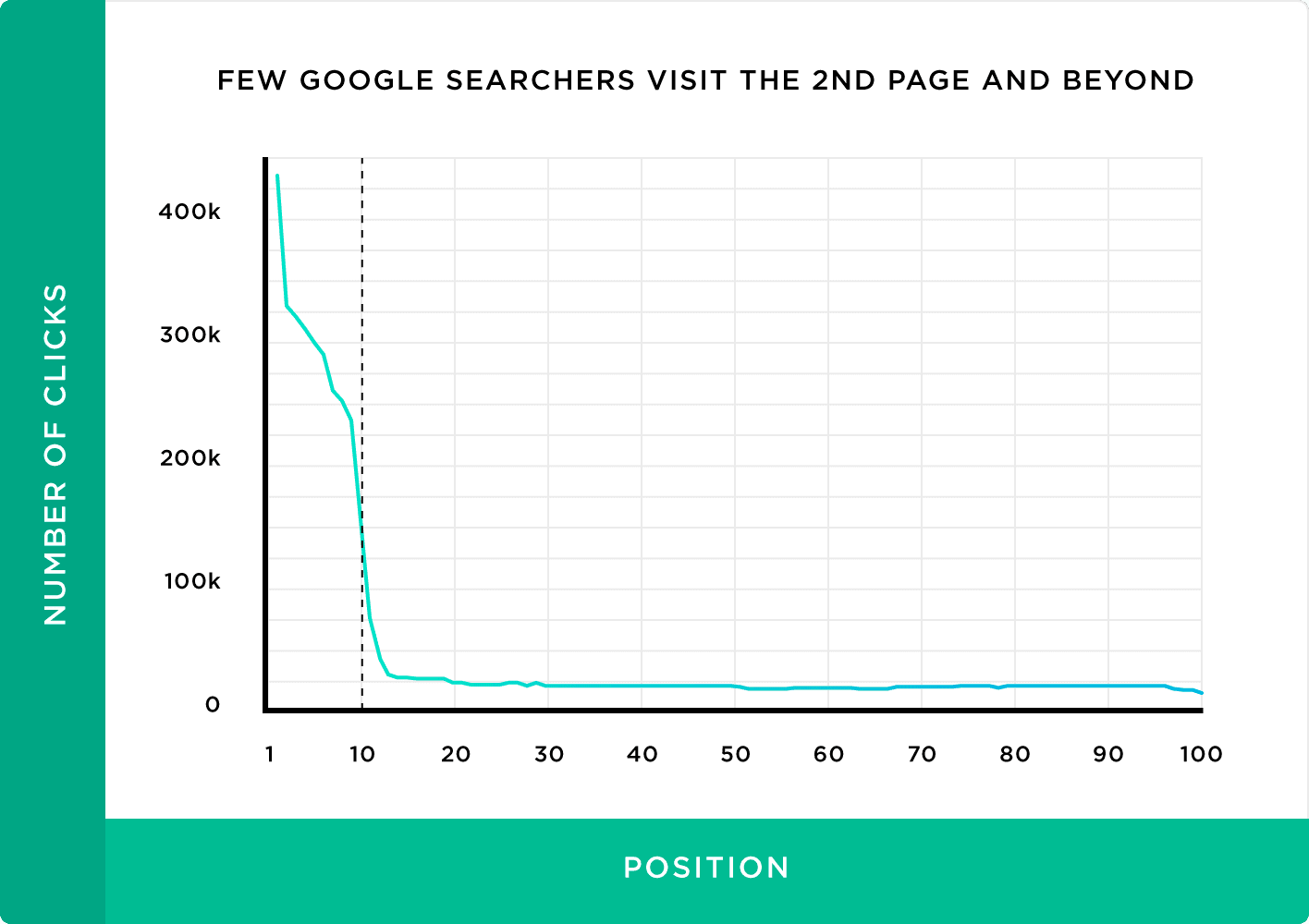
Check out this sharp dropoff after the first page of Google results! That’s why you need paid ads.
Doing SEO can get you some free online store traffic, but it takes time to build up a reputation and rank highly. In the meantime, consider investing in some pay-per-click (PPC) ads.
4. Run pay-per-click ads
Start with Google Ads, the most popular PPC system out there today. With Google Ads, you create an ad for your business and bid to have Google feature it at the top of the results page. You pay when your ad gets featured and someone clicks on it.
The average return is $ 2 for every dollar you spend, so it’s well worth the investment. Not sure how to run an ad campaign? No problem. Constant Contact makes it easy to create your ads and manage your ad spend, so you make the most of your advertising budget.
5. Retarget past site visitors
Some people will respond to your ads, visit your website, browse around, and then leave without buying anything. That’s okay — retargeting can help you to bring them back. Retargeting involves collecting the browsing data from people who visited your site, then showing them ads and sending them emails that promote the items they looked at.
Retargeting is easy. If you’re doing ad-based retargeting, your website will use “cookies” to remember what people browsed on your site. Cookies are little packets of data that a website sends to a user’s device to know what they did on the site and when. Based on that data, the ad system you use — Google Ads, for example — can show your messages to people who viewed your products.
You can also retarget customers through email if they gave you their address while they browsed your site. The site will collect information about that visitor and help you know what emails to send them.
Getting started
Now that you’ve learned how to generate traffic to your online store with social media, website SEO, and search ads, you can start experimenting to see what works best for your business.
For some inspiration, check out The Download, our comprehensive marketing guide for retail. There are ideas for your website, social media, and beyond. Take it one step at a time and remember — it only takes a few new visitors to boost your sales!
Digital & Social Articles on Business 2 Community
(21)
Report Post


